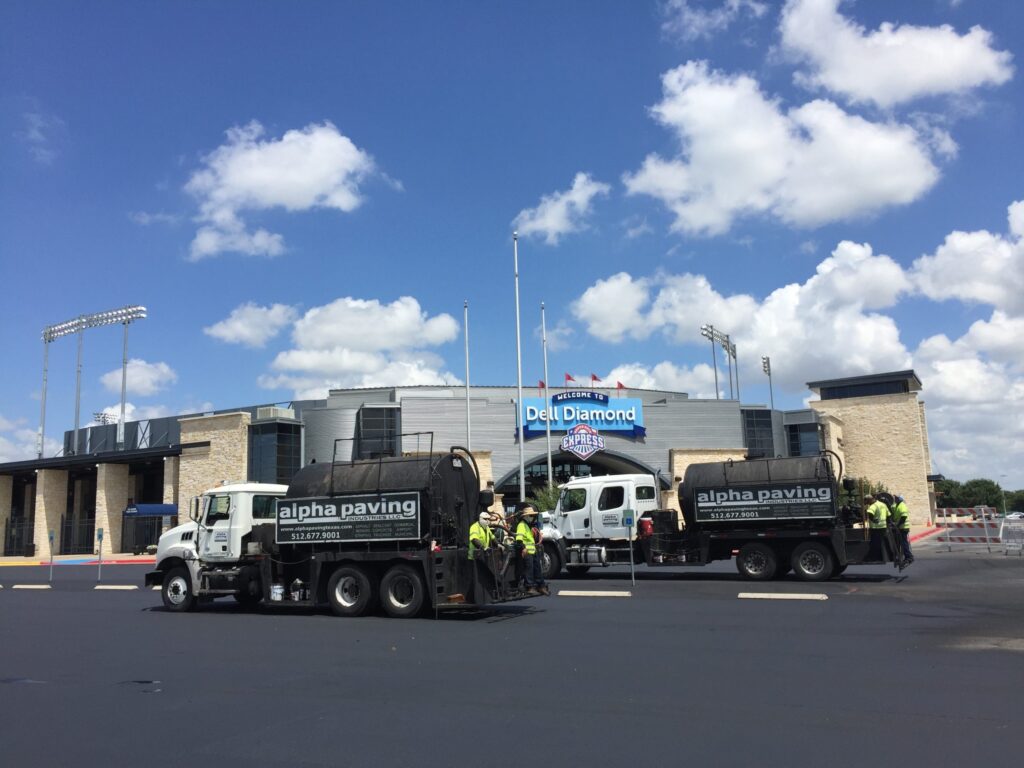 Preparation can make any repair job go smoother, take less time and ensure the best results. For example, mechanics make sure that they have the right wrenches to fit the part that they need to remove. Painters typically apply tape to areas that should not be painted and protect furnishings with tarps. The same concept holds true for asphalt paving contractors who are preparing to make pavement repairs.
Preparation can make any repair job go smoother, take less time and ensure the best results. For example, mechanics make sure that they have the right wrenches to fit the part that they need to remove. Painters typically apply tape to areas that should not be painted and protect furnishings with tarps. The same concept holds true for asphalt paving contractors who are preparing to make pavement repairs.
Asphalt Repair & Pothole Preparation
Preparing for Potholes
A pothole repair should be of sufficient quality to be considered permanent. A full-depth patch is typically considered to be the best solution for most potholes. However, the quality of the repair can hinge on the quality of the preparation.
• Chalk or paint is used to mark a rectangle or square around the pavement that is to be removed. The lines should include a minimum of 12 inches of surrounding pavement.
• The marked area is cut and the damaged pavement is removed.
• The resulting hole is cleaned to remove any debris or dirt.
• If part of the subgrade has been removed, backfilling may be needed.
• Heat or air is used to dry the inside of the hole, including the sides.
• Immediately before the asphalt is applied, a tack coat will be applied to the bottom and sides of the hole to improve the adhesion between the new asphalt and the old pavement.
The hot-mix asphalt can then be applied in layers; each layer is compacted before applying the next layer. A sand or chip seal is used to seal the edges and reduce the chances of water penetration.
Preparing for Crack Repairs
Having cracks repaired quickly can help you avoid more expensive repairs down the road. Cracks will continue to grow, allowing more water to reach the pavement’s foundation and destabilize it, resulting in potholes, alligator cracking or areas of pavement that have subsided. Because cracks are found in various sizes and configurations, the exact preparation methods may need to be adjusted, but the basic preparation is described below.
• If there is grass or other vegetation growing in the crack, the contractor’s crew will remove it.
• The crack will be cleaned to remove any debris, including gravel, sand or pieces of asphalt that may have accumulated within. A wire brush may be used or the contractor may use compressed air to clean the crack.
• Since the crack needs to be dry, a heat lance may be used to simultaneously clean and dry the crack’s interior.
• For some cracks, it may be necessary to use a router to widen the crack and make the sides smoother so that adhesion will be improved.
Once the crack has been prepared, it can be filled or sealed. There are several different materials that can be used for crack repairs. Your contractor will select the appropriate material for the size and type of crack. After the material is installed, the crack will be finished to provide the best appearance possible. If necessary, a blotting material may be applied to prevent tracking of the filler while it is curing.
Trust Alpha Paving for All Your Pavement Needs
Alpha Paving is an Austin based paving contractor with an outstanding reputation and impeccable references. We offer an extensive range of services, including asphalt repair, asphalt paving, asphalt sealcoating, parking lot striping, milling, road construction, pavement markings, speed bump installation, asphalt overlays, concrete services and car stops. We provide customers throughout Central Texas with exceptional workmanship at competitive prices. Our clients include numerous retail chains, municipalities, health care facilities, schools, manufacturing facilities, airports, hotels, restaurants, religious institutions, HOAs, shopping centers, office parks and apartment complexes. If you have questions about Asphalt Repair & Pothole Preparation, speak to one of our knowledgeable staff members by calling (512) 677-9001.




